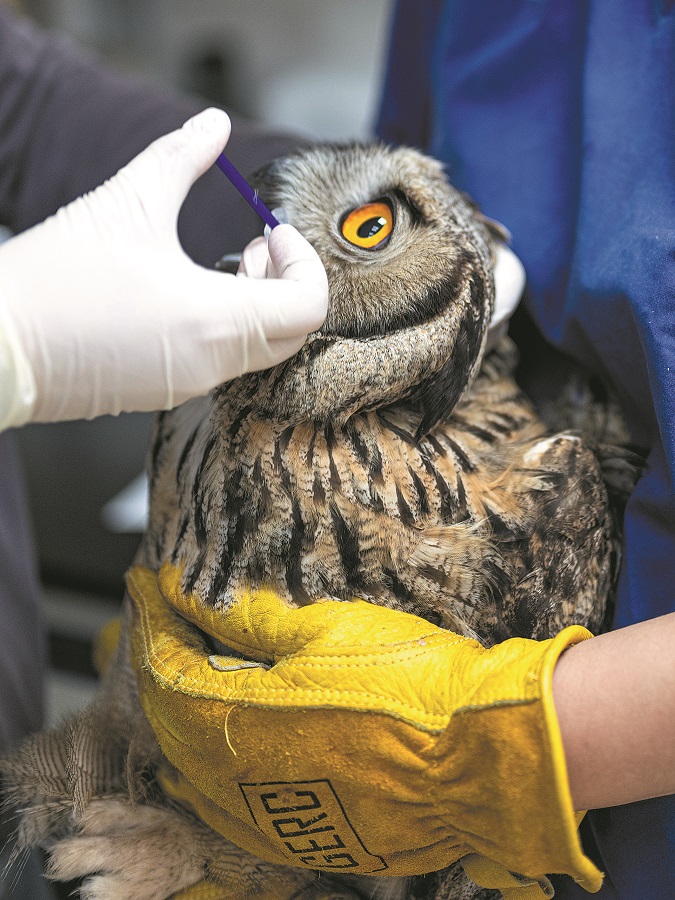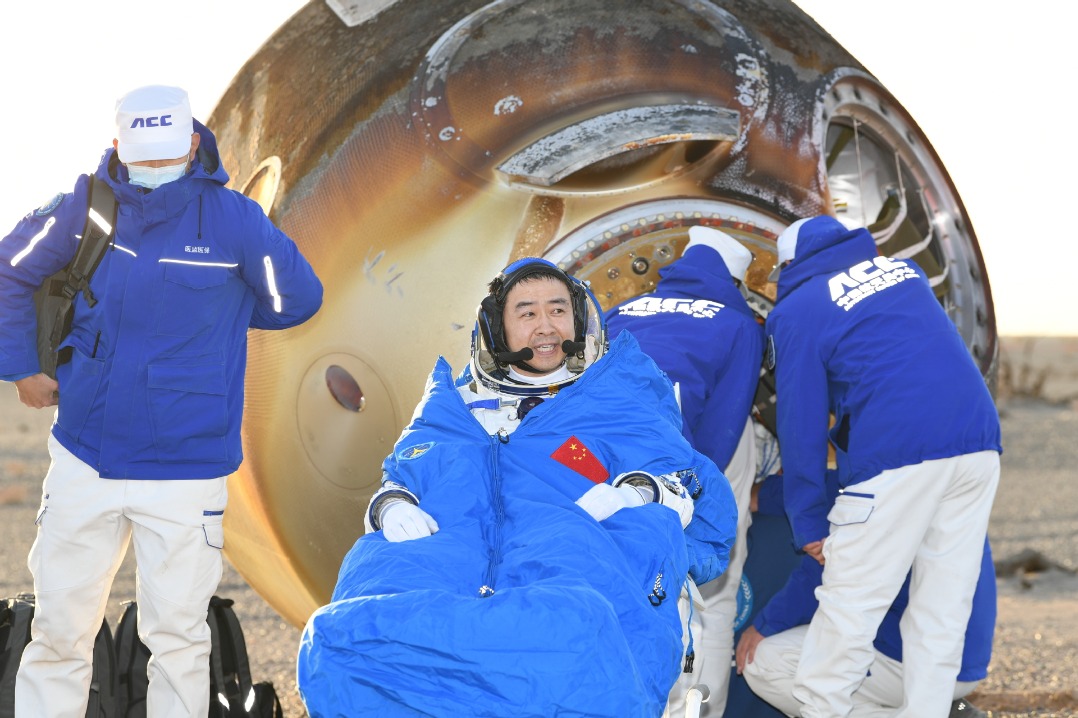Birds of prey a fresh challenge for Beijing
Public awareness, rescue efforts increase as number of raptors grows


City predators
Owls are listed as a national protected animal in China, and considered a top predator in the capital city. Zheng Zhishan, manager of the rescue center, said the eagle owl is the largest wild owl species in Beijing. It usually stands at a maximum height just above 70 centimeters, and can weigh more than 5 kilograms.
"When a raptor appears as a top predator in a particular region, it can easily create a ripple effect among nearby birds, causing them to 'pounce' on it to protect their territory," Zheng said.
She said all bird species are wary of raptors — the top avian predators — as they pose a threat to their survival.
Sun Quanhui, a scientist with World Animal Protection, said eagle owls are relatively large and mainly prey on small birds and mammals such as hares and pheasants.
"Eagle owls are less likely to be found in densely populated urban areas, and are mostly found in the outer suburbs of the city," Sun said.
"A possible reason for the appearance of the eagle owl at Houhai Lake is that the ecological environment of Beijing has improved significantly in recent years. The population of eagle owls in mountainous and suburban areas has continued to grow, with some individuals inadvertently entering into the city center in search of new living spaces," he said.
On March 19, raptor rescue center staff conducted a full examination of the rescued eagle owl. Zhou Lei, a rehabilitator who has worked at the center for more than a decade, and her colleague, Dai Chang, started the assessment by placing the eagle owl on a clean sheet.
The eagle owl's body was still wet, and the color of the skin under the feathers looked abnormal in some areas.
"Later we found it might be because the eagle owl struggled a long time in the river,"Zhou said, adding they found an old fracture of the bird's keel bone.
"In the artificial environments, wild animals easily get stressed, so its appetite was not good in the early stages of rehabilitation," she said. "Its initial weight was 1,916 grams. Now it weighs 1,790 grams, which means it may have had a bad intestine and stomach, and needed further treatment."
The fullness of the eagle owl's pectoral muscles, an indicator of a bird's fitness, was low, she added.
"To keep it healthy and help it return to nature as soon as possible, we injected it with a nutrient solution, which can help the eagle owl quickly regain its strength," said Zhou. The center released the eagle owl back into the world at the beginning of April.
























